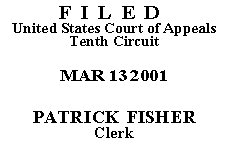
|
UNITED STATES OF AMERICA, Plaintiff-Appellee, v. OLLIN RAY TRAMMEL, Defendant-Appellant. |
|
Before HENRY, BRISCOE, and
MURPHY, Circuit Judges.
After examining the briefs and appellate record, this panel has determined unanimously that oral argument would not materially assist the determination of this appeal. See Fed. R. App. P. 34(a)(2); 10th Cir. R. 34.1(G). The court therefore honors the parties' requests and orders the case submitted without oral argument.
Following a jury trial, Ollin Ray Trammel was convicted of one count of conspiracy to manufacture a controlled substance in violation of 21 U.S.C. § 846; one count of maintaining a location for the purpose of manufacturing and distributing a controlled substance in violation of 21 U.S.C. § 856; and one count of possession of equipment, chemicals, and products which may be used to manufacture a controlled substance in violation of 21 U.S.C. § 843(a)(6). Trammel was sentenced to a term of 235 months on the § 846 count, 235 months on the § 856 count, and 120 months on the § 843(a)(6) count, with all sentences to run concurrently. On appeal, Trammel raises the following single narrow question of law: Whether the district court erred, in light of the Supreme Court's recent decision in Apprendi v. New Jersey, 120 S. Ct. 2348 (2000), in determining drug quantity for purposes of computing Trammel's sentence under the Sentencing Guidelines, instead of submitting the question of drug quantity to the jury. This court exercises jurisdiction pursuant to 28 U.S.C. § 1291 and affirms.
As Trammel recognizes, because he did not raise this issue before the district court, this court's review is limited to plain error. See Fed. R. Civ. P. 52; United States v. Hishaw, 235 F.3d 565, 574 (10th Cir. 2000) (holding that an Apprendi claim raised for the first time on appeal is reviewed only for plain error). Under the plain error standard, "[r]eversal is only warranted if there is: (1) an error; (2) that is plain or obvious; (3) affects substantial rights; and (4) 'seriously affect[s] the fairness, integrity[,] or public reputation of judicial proceedings.'" Hishaw, 235 F.3d at 574 (quoting United States v. Olano, 507 U.S. 725, 732 (1993)).
As noted above, Trammel's legal challenge to his sentence is particularly narrow. He does not, and could not under existing Tenth Circuit precedent, contend that the underlying convictions are invalid or that he was sentenced to a term in excess of the statutory maximum as to any of his convictions. See United States v. Thompson, 237 F.3d 1258, 1262 (10th Cir. 2001) ("[W]here a defendant is charged under 21 U.S.C. § 841(a), found guilty beyond a reasonable doubt, and sentenced within the minimum statutory range of 0-20 years, there is no Apprendi violation for failure to charge and prove the amount of drugs involved."); United States v. Jones, 235 F.3d 1231, 1236 (10th Cir. 2000) (same). Instead, Trammel simply asserts that after Apprendi the question of drug quantity must always be submitted to the jury and proved beyond a reasonable doubt, even when the drug-quantity determination is only relevant to the question of determining a Sentencing Guidelines range at or below the statutory maximum. This court recently rejected this exact contention, holding as follows:
[T]he district court did not err in considering drug amount as an aggravating or mitigating factor in establishing Defendant's offense level under the Sentencing Guidelines. Not all facts that affect a defendant's sentence are essential elements, requiring prosecutorial proof and jury finding. The Apprendi court noted that judges may still "exercise discretion--taking into consideration various factors relating to both offense and offender--in imposing a judgment within the range prescribed by statute." Apprendi, 120 S. Ct. at 2358. In fact, the Court specifically avoided disrupting the use or adequacy of the Sentencing Guidelines, noting that "[t]he Guidelines are, of course, not before the Court. We therefore express no view on the subject beyond what this Court has already held." Id. at 2366 n.21. Judges may still ascertain drug quantities by a preponderance of the evidence for the purpose of calculating offense levels under the Sentencing Guidelines, so long as they do not sentence above the statutory maximum for the jury-fixed crime. See United States v. Angle, 230 F.3d 113, 123 (4th Cir. 2000) (interpreting §§ 841 and 846 in light of Apprendi). Thus, while the district court's drug quantity finding increased Defendant's offense level and hence his sentence, it did not increase the maximum sentence he faced, and as such did not infract Apprendi.
United States v. Heckard, 238 F.3d 1222, 1235-36 (10th Cir. 2001).
Because this court's recent decision in Heckard forecloses Trammel's claim of error, the judgment of the United States District Court for the Northern District of Oklahoma is hereby AFFIRMED.
ENTERED FOR THE COURT
Michael R. Murphy
Circuit Judge
*. This order and judgment is not binding precedent, except under the doctrines of law of the case, res judicata and collateral estoppel. The court generally disfavors the citation of orders and judgments; nevertheless, an order and judgment may be cited under the terms and conditions of 10th Cir. R. 36.3.